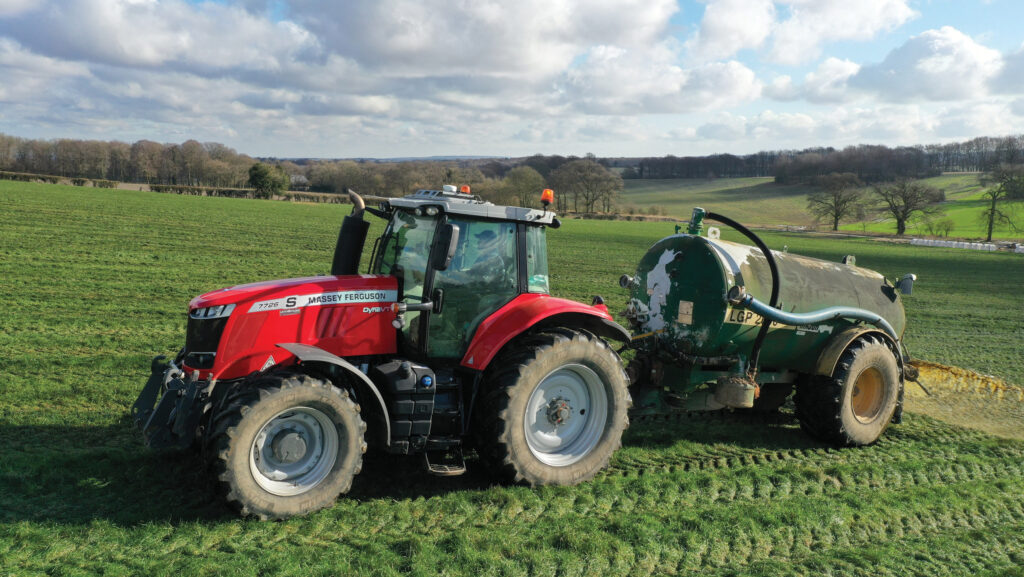Soil, silage and slurry rules under inspection scrutiny
 © Kevin Milner Countryside and Farming Photography
© Kevin Milner Countryside and Farming Photography Farming compliance in England is shifting to an environmental focus, although all of the requirements under the Basic Payment Scheme cross-compliance regime remain in place.
Soil, silage and slurry are the areas particularly under the spotlight, warns a leading advisory firm.
This is in contrast to the former Basic Payment Scheme system, where the most common breaches involved cattle and sheep identification.
Gaps in nitrate vulnerable zone record-keeping, particularly on smaller farms, was also an issue, and continues to be so, alongside failure to have adequate protection zones next to hedgerows and watercourses.
See also: Environmental impact assessments – what’s required?
“The Rural Payments Agency is doing fewer inspections and the focus is far more on environmental regulations, especially silage and slurry installations, with heavy Environment Agency [EA] inspections and very formal and unforgiving letters,” says Karen Powell, managing director of compliance adviser CXCS.
No soil test
Lack of a soil test is a big problem area under the farming rules for water (FRFW), says Karen. Under this, soil sampling and analysis must be taken into account when an application is being planned.
The results must include the pH of the soil, phosphorus, magnesium and potassium levels, and the analysis result must be no more than five years old at the time of the application.
Nitrogen levels can be established through assessment of the soil nitrogen supply, rather than soil sampling and analysis.
The soil test requirements under the FRFW cover agricultural land that has been cultivated by physical means (including ploughing, sowing or harvesting) at least once in the previous year, or by chemical means (including the application of organic manure or manufactured fertiliser) at least once in the previous three years, and includes grassland.
“The chemical cultivation aspect is often overlooked by farmers,” says Evie Price, technical adviser with CXCS.
Sustainable Farming Incentive compliance
It is not yet clear how compliance with commitments made under Countryside Stewardship and the Sustainable Farming Incentive will be inspected or regulated, says Evie Price of CXCS.
“You don’t have to provide any documentation, when you apply, that you are eligible for all of the actions or that you are meeting requirements.
“As far as we are aware, the annual declaration is just a statement to say that you have complied.
“We’re still expecting them to either do a desk-based approach, where they will contact the applicant and ask them to provide documents as evidence that they have complied, or that farm visits will actually be undertaken.
“But we’re still waiting on that to see how they are going to carry it out.”
No nutrient management plan
Failure to have a nutrient management plan, or an adequate one, is another common issue.
“If it’s clear you’re going to have too much muck to spread under the rules, you need to make arrangements with a neighbour, or in some cases a farmer further away, to utilise it, and you need to be sure that’s not going to put them in breach,” says Karen.
“All of this needs to be documented.”
Enforcement
Sometimes the deadlines given to remedy breaches are short, for example, two weeks to address an inadequate freeboard – the vertical distance between the top of a slurry tank or lagoon and surface of the slurry.
Spreading during the closed period can result in a fine of £3,000 or more, depending on the extent of the spread and the environmental history of the land manager.
It is not unusual for the EA to be alerted to this by a member of the public, says Karen.
Rules for farmers and land managers
Cross-compliance rules originally related to the Single Payments Scheme, introduced in 2005 and followed by the Basic Payment Scheme (BPS) regime.
It also applied to rural development schemes such as the Entry and Higher Level Schemes, and to Countryside Stewardship, but technically lapsed when BPS was delinked in England from 1 January 2024.
However, all of its former requirements are now collected under the rules for farmers and land managers on the Defra website.
The most recent addition to the collection is the Management of Hedgerows (England) Regulations 2024, added on 23 May.
This introduces no changes to requirements, but gives existing hedgerow rules statutory backing.
Full details can be found on gov.uk
